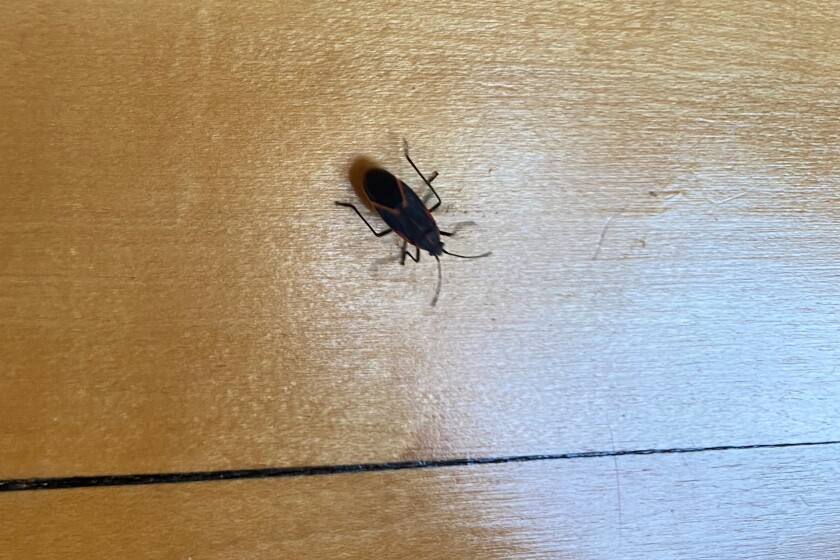Long black bugs found in homes can be various types of insects, including house centipedes, which are slender and fast-moving with numerous legs. Earwigs, dark brown or black with distinctive pincers, often inhabit dark, damp areas indoors. Ground beetles, elongated and black, may enter homes seeking shelter or food.
Cockroaches, typically dark-colored, are commonly found in areas abundant with food and water, such as kitchens and bathrooms. While not black, silverfish are elongated insects with a silver-gray color and can sometimes appear black.
This post will explore the world of long black bugs, including common species identification, behavioral analysis, and management and preventative advice.
What are the characteristics of Long Black Bugs?

“Long black bugs” is a broad term that could refer to various species of insects. However, there are some general characteristics that may apply to many long black bugs:
Shape and Size
Long black bugs are typically elongated in shape, with slender bodies. The exact size can vary depending on the species, but they are generally longer than they are wide.
Color
As the name suggests, these bugs are predominantly black in color. However, some species may have variations in coloration, such as dark brown or a metallic sheen.
Legs
They usually have six legs, like most insects, which are attached to the thorax.
Antennae
Many long black bugs have antennae that are as long as or longer than their bodies.
These antennae are often used for sensory purposes, such as detecting food or mates.
Habitat
Long black bugs can be found in various habitats, including forests, grasslands, gardens, and even urban areas.
Some species may prefer specific environments, such as moist or dry conditions.
Diet
Their diet can vary widely depending on the species. Some long black bugs are herbivores, feeding on plants and foliage, while others are carnivores or omnivores, preying on other insects or scavenging for food.
Behavior
Behavior can also vary between species. Some long black bugs may be active during the day (diurnal), while others may be more active at night (nocturnal). They may exhibit solitary behavior or live in colonies, depending on the species.
Life Cycle
Long black bugs undergo metamorphosis, typically starting as eggs, then hatching into nymphs or larvae before eventually reaching adulthood.
The duration of their life cycle can vary greatly depending on the species and environmental conditions.
How to identify Common Types of Long Black Bugs?

Identifying common types of long black bugs can be challenging without specific details, but here are some general characteristics and identification tips for several common types:
Ground Beetles (Family Carabidae)
- Ground beetles are typically elongated and flattened insects with prominent mandibles.
- They often have shiny black or dark brown bodies.
- Some species may have ridges or grooves on their elytra (wing covers).
- Ground beetles are often found on the ground, under rocks or logs, and in leaf litter.
Stink Bugs (Family Pentatomidae)
- Stink bugs have shield-shaped bodies with a distinctive triangular scutellum between their wings.
- They are usually black or dark brown, sometimes with markings or patterns.
- Stink bugs emit a foul odor when threatened, giving them their name.
- These bugs are often found on plants, where they feed on sap or fruits.
Darkling Beetles (Family Tenebrionidae)
- Darkling beetles have elongated bodies with short antennae and clubbed ends.
- They are typically black or dark brown, with hardened elytra covering their wings.
- Some darkling beetles have grooves or punctures on their elytra.
- These beetles are commonly found in dry habitats like deserts and arid regions.
Earwigs (Order Dermaptera)
Earwigs have elongated bodies with pincer-like cerci at the end of their abdomen. They are usually black or dark brown, with some species exhibiting reddish or yellowish markings.
Earwigs have distinctive wings folded underneath their forewings, giving them a flattened appearance. These bugs are often found in damp areas like gardens, under rocks, or in decaying organic matter.
Rove Beetles (Family Staphylinidae)
Rove beetles have elongated bodies with short elytra, exposing most of their abdominal segments. They are typically black or dark brown, with some species having reddish or metallic markings.
Rove beetles have short, clubbed antennae and strong mandibles.
These beetles are commonly found in various habitats, including soil, leaf litter, and decaying organic matter.
FAQ’s
Are silverfish harmful?
Silverfish are not harmful to humans directly but can damage paper goods, textiles, and other starchy materials.
Can silverfish bite me?
Silverfish are not known to bite humans. They primarily feed on carbohydrates and do not pose a direct threat to people.
What kills silverfish?
Silverfish can be killed using insecticides specifically formulated for them, such as boric acid or diatomaceous earth.
What naturally kills silverfish?
Natural remedies such as cedar oil, citrus sprays, or essential oils like lavender or peppermint can repel or kill silverfish.
What attracts silverfish?
Silverfish are attracted to damp, humid environments and sources of starches and sugars like paper, glue, and food crumbs.
Final Words
It’s critical to maintain vigilance if you see long, black bugs in your home. Early detection of these pests can help you avoid potential health risks and property damage. Don’t forget to be proactive by caulking entryways, maintaining a clean house, and getting expert assistance when necessary.
You can make sure that you and your family live in a secure and pleasant environment by putting effective pest management techniques in place.
